Javascript can be found everywhere nowadays ,from browser to server, from mobile to desktop, even in hybrid apps as well. Also It has a vast community behind it with an equally incredible eco-system which is contineously evolving in a proper way .
All of this led it to become one of the most preferred language to learn for newbies like me for getting a job in near future . But a lot of us never try to find out how it is actually working behind the scene , unless they have a interview scheduled next week .
That's why this article is an attempt to give everyone a heads up about the basics ..so without further ado ..let's get going then..
Have you ever thought how come all the modern browsers understand javascript ? who is translating it for them ?
They all have something similar...A Javascript Engine built into them...
What Is Javascript Engine now ?
A Javascript Engine nothing but a program written normally in C and C++ , which goes through the javascript code one line at a time and convert it to the machine readable format so that the cpu can understand and execute it .
Some famous javascript engines are :
- V8 – engine used in Opera & Chrome.
- SpiderMonkey – engine used in Firefox.
- SquirrelFish – engine used in Safari.
Ok, So What's in this Engine ?
It is mainly consist of two main parts :
- Memory Heap
- Call Stack
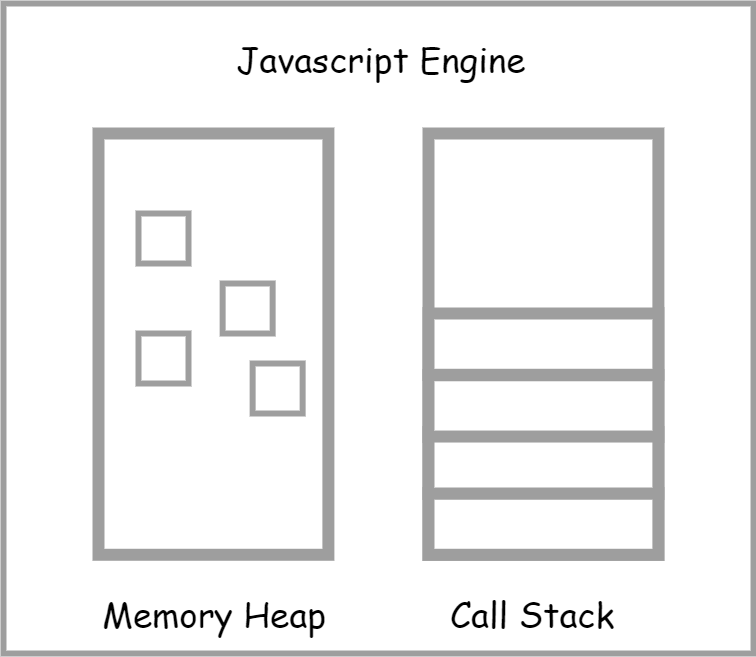
What are those now ?
Memory Heap - Whenever you define a variable, constant, object, etc in your javascript program, you need some place to store it first,
That place is nothing but the memory heap.So Whenever we define a variable like
var a = 10, a location in the memory is assigned to store the value of a.However there is something important here to remember , the available memory in Memory Heap is limited . So even if Javascript offers a effective garbage collection mecanism automatically, Memory leaks can still occur due to various reasons like Using Global Variables or Using Too Many Event Listeners etc etc.
Call stack - The Call Stack is nothing but a data structure, which records basically where in the program we are. As JavaScript is a single-threaded programming language, it has only one Call Stack .
Which means whenever we execute a function i.e we put it on the top of the stack or when we return from a function i.e we pop it off from the top of stack , all of it happens one at a time .
Call stack size is also limited like Memory Heap . So whenever a program attempts to use more space than there is available, Stack Overflow occurs .
Why does Javascript choose to be single threaded ?
Because it is easy and less complicated than multi-threaded environment, where sometimes you have to deal with scenarios like Deadlocks and all .
But isn't it limiting ? What's gonna happen when things are slow ?
Yes . If we process things like image processing or network request synchronously, It can be a cause of browser getting stuck or block . And that's not the only problem you are going to encounter here . Once the browser starts to process all the remaining tasks, It may stop being responsive for a quite long time .
I think all of you must remeber this page unresponsive error .
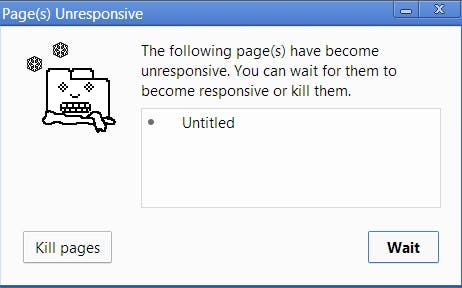
So How to prevent Blocking then ?
Well , the answer is Asynchronous Callbacks .
Wait , you just said it is a single threaded langunage,then how does it handle Asynchronous Callbacks ?
Well it turns out I have been telling you partial truth this whole time . There's more to the browser than just the engine . It also consist of Event Loop and Call back Queue along with various Web APIs like the DOM, AJAX (XMLHttpRequest), setTImeout() and many more .
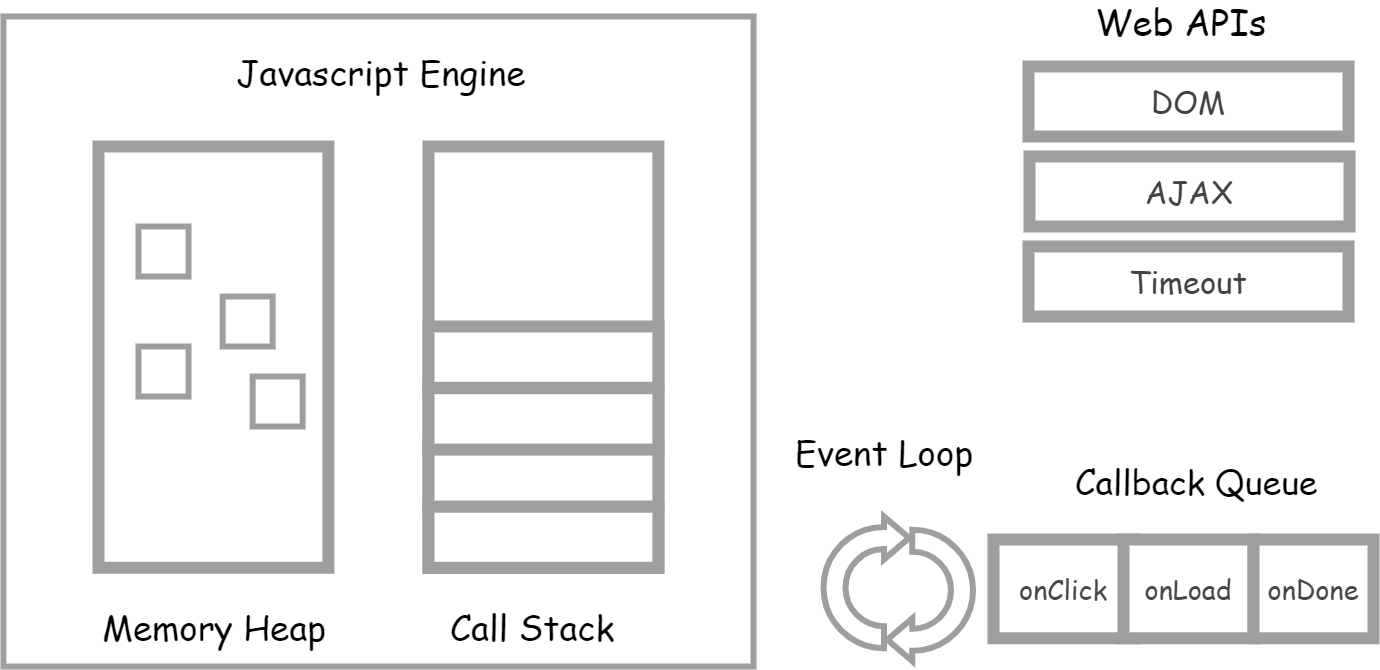
So, you are saying setTimeout() is not a part of javascript then ?
Yes , Technically it's not a part of javascript engine . As it provided by the Web APIs .
Can you give us a example ?
Sure , Consider the following the codes..
console.log('1');
setTimeout(()=>{
console.log('2');
},5000);
console.log('3');
As you all know, the output gonna be like this
1
3
2
but do you know how does it arrive at this output ...let me walk you through this ..step by step..


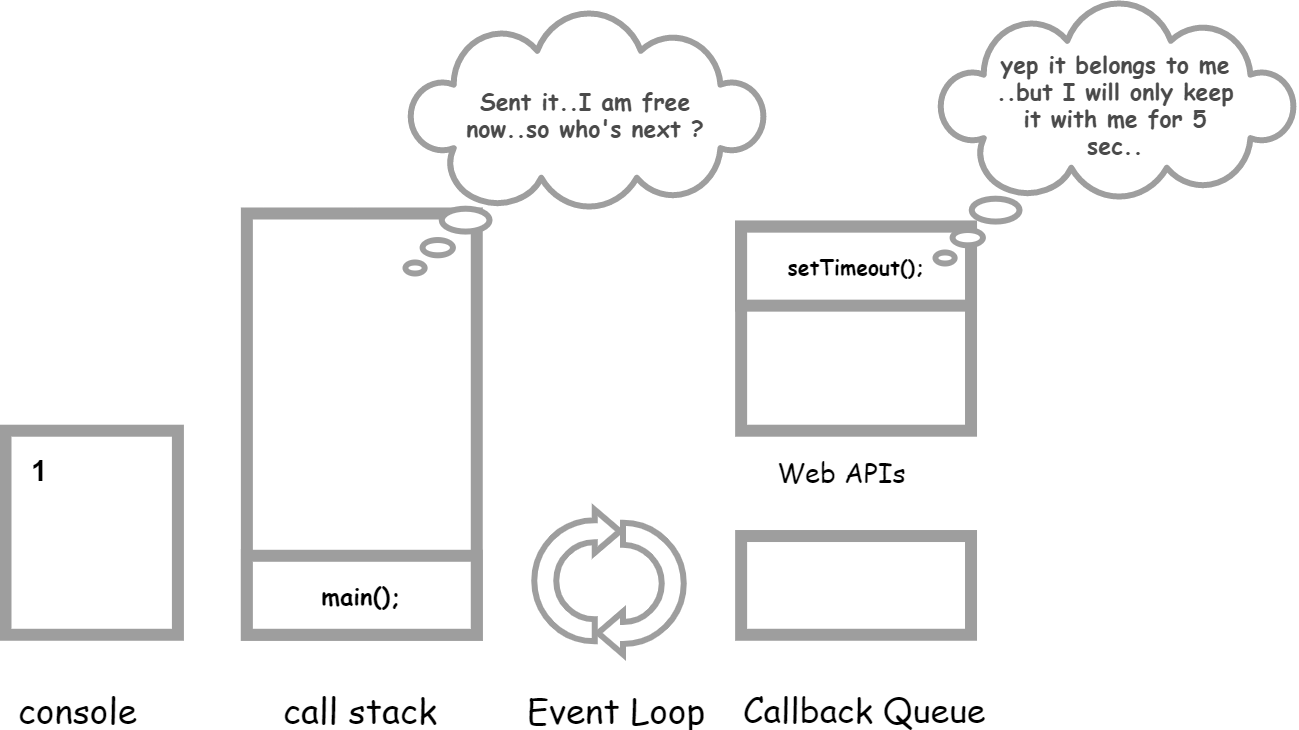

Five seconds later...
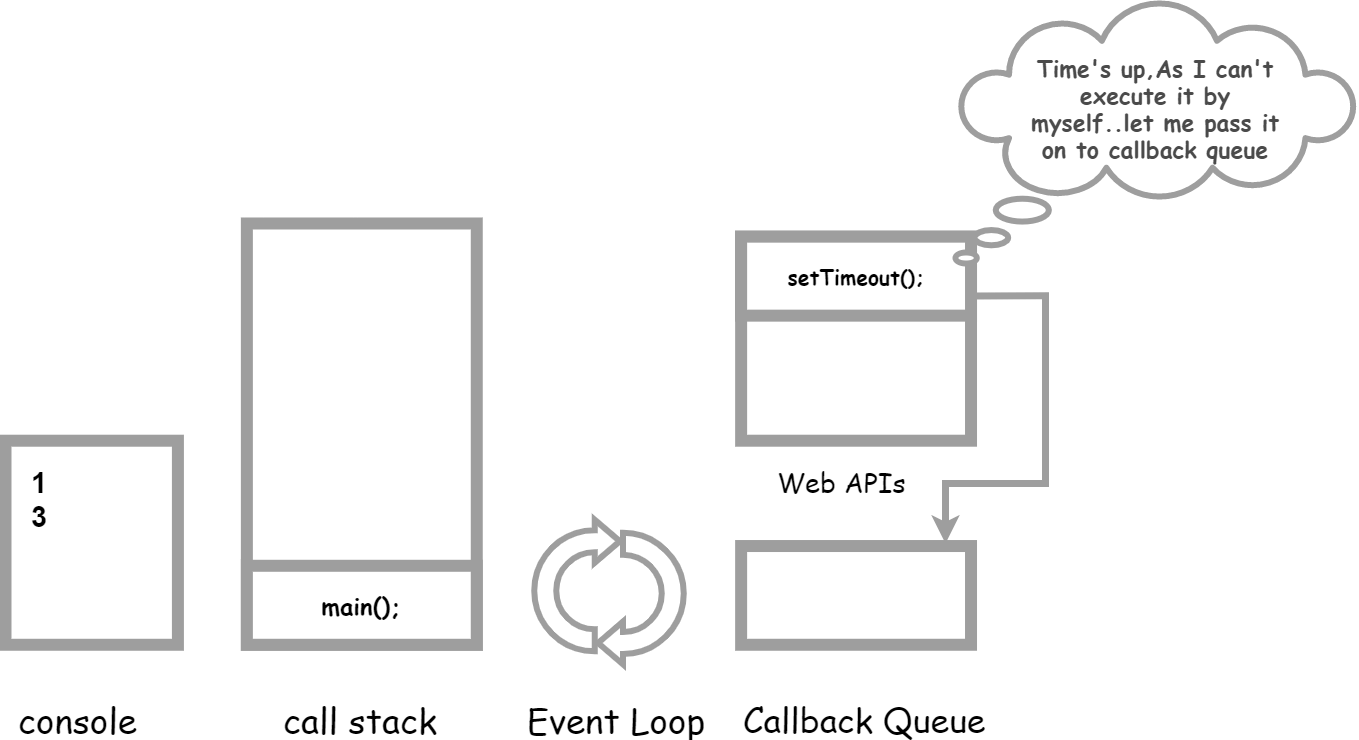

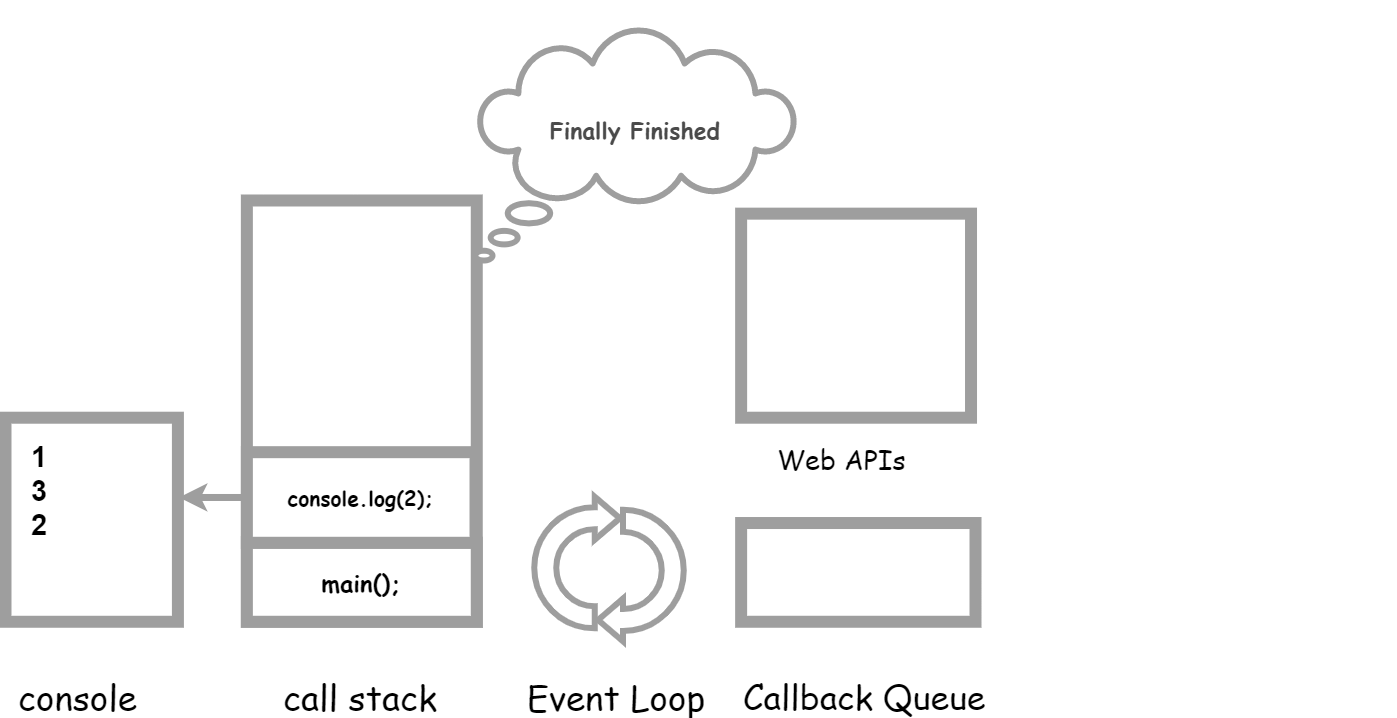
I have a doubt , What if the setTimeout() is set to 0 ?
The result is still going to be same , As the callback by any means not going to pass through the Event Loop untill the stack is complete empty .
Ok,.this looks interesting , Where can I find out about this more ?
I have choose to not going into too much depth about it because if you are only starting out it might be overwhelming for you already . But for those who are into the game a little bit longer, I believe the following resources can help them for sure .
medium.com/better-programming/how-javascrip..